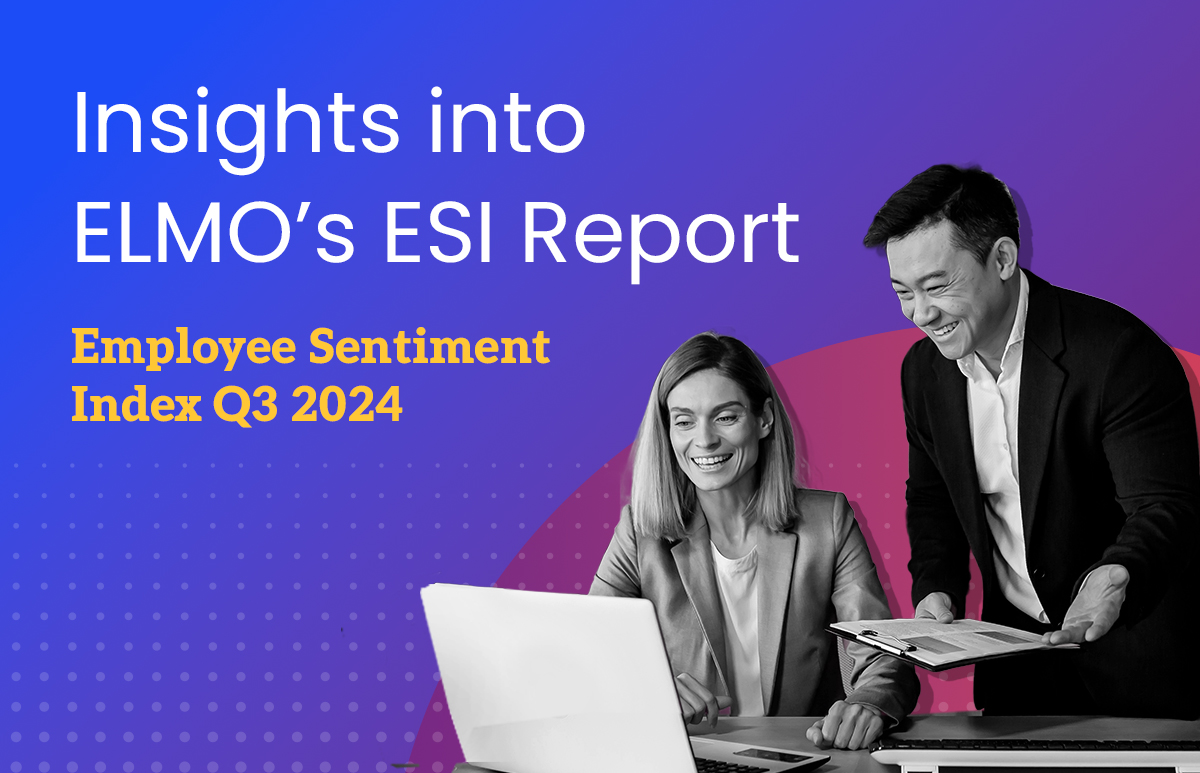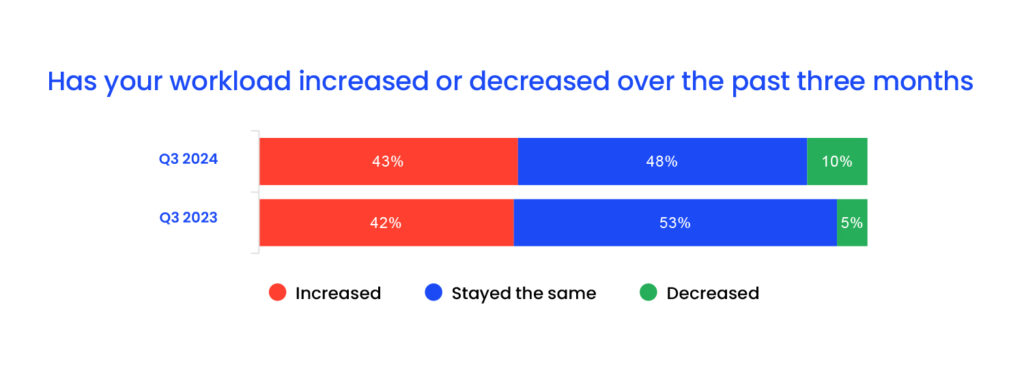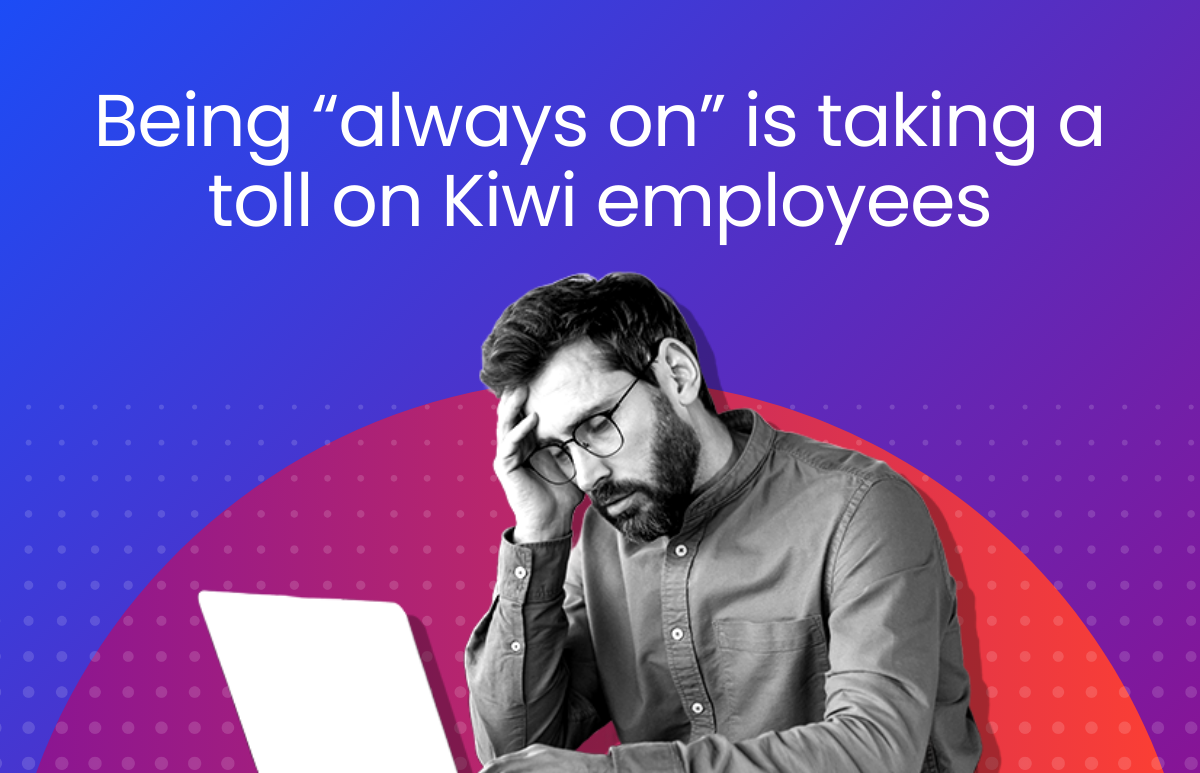ESI Report Q3 2024 in New Zealand: Wellbeing, Job Security, and Leave Accrual

Every quarter ELMO researches how New Zealand employees feel about a range of factors including, job security, hours worked, well-being, and future work trends. In this quarter we also focused on annual leave, workload, and technology.
You can download and read the full report here: ELMO’s Employee Sentiment Index New Zealand (July-Sept ‘24)
We have also summarised the key findings and insights below.
It’s encouraging to see New Zealanders generally feeling more secure in their jobs, organisations, industry and economy this quarter. However, they have not returned to the levels seen at the start of 2024. There continues to be significant leave accrual among employees and while perceptions of security have increased slightly this quarter, there could be a correlation between saving leave, increasing workloads and anticipatigng the need for a payout ‘just in case.’
There’s a strong focus on future-readiness and technology. Employees seem to value training and development opportunities and recognise the potential of technology to enhance productivity.
Key Findings
Employee wellbeing & burnout
Nearly half (45%) of NZ employees reported taking a legitimate sick day in the past three months, the highest rate in over a year. Additionally, 19% of employees have taken a dedicated mental health day, highlighting an increasing prioritisation of mental health. However, this focus on well-being comes alongside a rise in employee burnout, with 39% reporting feeling burnt out, the highest level recorded this year.
Workload and headcount concerns
A substantial 43% of employees say their workload has increased in the past three months, slightly up from last quarter (42%). This increase is largely due to less people doing the same amount of work, a trend impacting 47% of those affected.
Leave accumulation and hesitation
One notable trend is the accumulation of substantial leave balances among employees. Just under one in five (19%) employees have accrued their full entitlement of four weeks or more, while the average employee has just 15 days of leave.
A large majority (72%) of employees face barriers that prevent them from taking leave. The most common reasons include saving their leave for potential emergencies or redundancies (36%), and 25% not being able to afford a holiday.
Recognition and remuneration:
There are some positive increases in how employees feel rewarded for their hard work. 71% feel recognized for their contributions at work.
There has also been a significant improvement in the perception of fair pay, with 63% of employees believing they are paid fairly. This represents a substantial increase from the previous quarter (58%) and the start of the year (54%).
The anticipation of receiving a pay increase within the next year has also increased to 57%, although it remains lower than the same time last year (64%).
Focus on future-readiness and technology
Three-quarters of employees believe their organisations provide adequate training and development opportunities for future job demands (75%), employability (71%), and staying current with technological advancements (70%). Employees believe that better task management processes, improved communication tools, and online learning platforms would enhance their productivity.
Insights
Open communication about workload
With a significant portion of the workforce (43%) reporting increased workload, employers must prioritise open communication with employees about workload management. HR leaders can encourage managers to discuss workload concerns, explore solutions for headcount shortages, and advocate for better resource allocation. This could contribute to a more manageable and less stressful work environment.

Prioritise wellbeing and leave utilisation
Fostering a workplace culture that emphasises employee wellbeing and encourages holidays can help reduce burnout, promote work-life balance, and create a more positive and supportive environment. By understanding how much leave your organisation has accrued, you can identify departments or individuals who aren’t taking their leave. This may uncover other underlying issues that need to be addressed.
There are three strategies you can implement if your organisation is looking for ways to reduce your annual leave liability.
- Introduce a leave bonus scheme
- Promote a healthy work balance culture
- Make leave planning easier and more transparent.
Read more about these strategies here.
Proactively address job security concerns
While overall job security perceptions have improved, concerns about potential redundancies and the need to work longer hours persist, particularly among younger generations. This is where HR teams can proactively explore upskilling and reskilling employees to meet both current and future skills needs. Professional development can also alleviate anxieties and promote a sense of stability and career growth.
14% of employees believe Employee Self-Service (accessing payslips & leave management) would help them be more productive. By allowing employees to handle these administrative tasks, HR professionals and managers can focus more on strategic initiatives like talent development, performance management, and creating a positive work environment. This aligns with the findings that Australian workers value training and development opportunities and that better task management processes could improve productivity
Download the full ESI report now for exclusive insights and data-driven recommendations.
 HR Core
HR Core 









